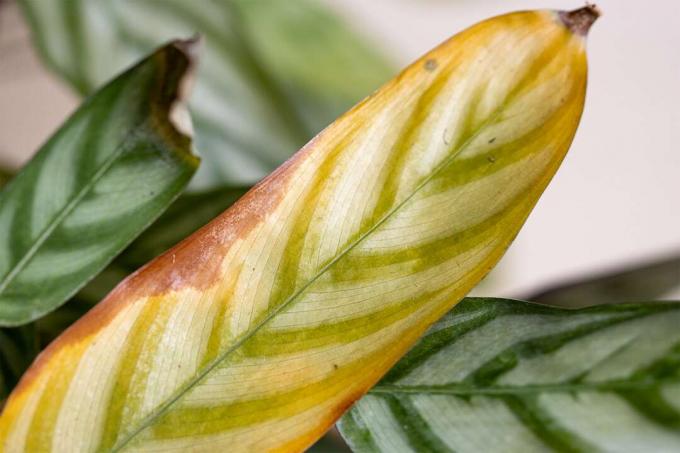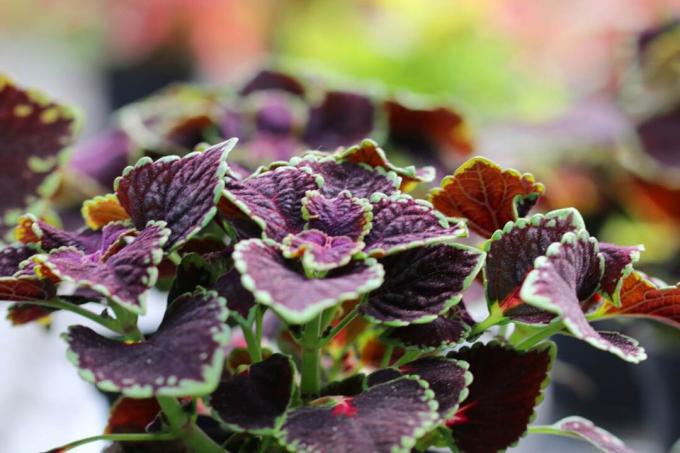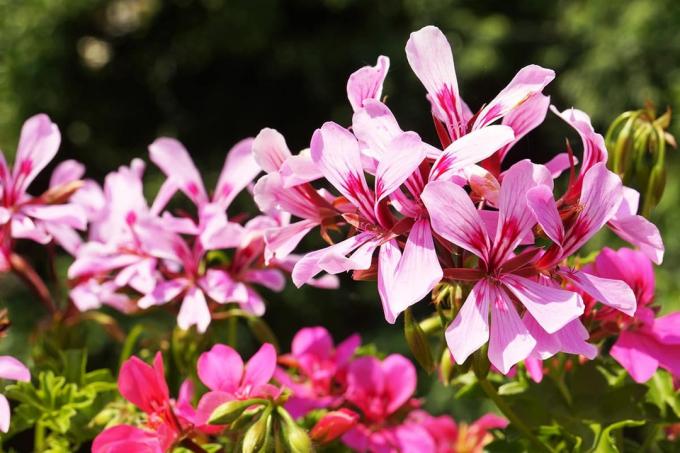
Table of contents
- water demand
- storage water
- Bathtub
- line
- Bottle
- Water
- prevention
- Pour
- Dive
- Upbringing
- purge
- Accesories
- clay cone
- water storage ball
- water storage box
- drip irrigation
- Micro drip system
- Garden
- cover
- Lawn
- Pour
- First aid
- Conclusion
If you don't have to leave head over heels, you can take the right measures to water your plants with a few considerations in advance. Frequent travelers can start choosing the right plants at the time of purchase. Physical considerations, water baths and lots of clever accessories can ensure that the native plants are adequately watered on holiday. The following helpful tips for the right water supply without having to call on the help of neighbors and friends.
Luckily, there are several ways to water your plants, depending on how long you want to be away and how long you're going to be away. This reduces the water requirement of the plants. Water reservoirs can be created so that the plants can draw their water as needed. The garden trade has a lot of accessories ready for this case. Even when you return, you can make things right again or, if necessary, even save them. Last but not least, anyone who likes to travel often can start right away with the selection of their plants. For example, many succulent plants or palm species require very little watering.
water demand
Before an absence of several days, the water requirement of the plants can be reduced:
- Plants in full bloom need a lot of water: Unfortunately, the travel time often coincides with the flowering time of many plants. Therefore, a radical yet effective method would be to simply cut off the flowers of the particular plant before leaving.
- Reduce the risk of evaporation To prevent the water from evaporating so quickly, put some mulch or gravel over the soil in the pots.
- Plants in the blazing sun need a lot of water, so it makes sense to move the plants from the sunny window seat a little further into the middle of the room before you travel. If you have a bright and slightly cooler place, the water requirements of the plants can be reduced by a lot. Automatic shutters would be another option or gathering place on the north window. Of course, the location must not be too dark, because sufficient light is essential for plants.
storage water
There are several ways to provide the plants with a supply of water during their absence. The aim of these methods is that the plants can draw their own water as needed.
Bathtub
In a bright bathroom you can all place the indoor plants in the bathtub. Before doing so, cover the tub with a plastic film to protect it and place the plants in it. Now the tub is filled with about 3 cm of water. Done one day before departure, you can possibly add some water on the day of departure.
Even better: there are special mats on the market that can store a lot of water. If you place the clay pots on the watered mat, there is no risk of overwatering the plants. Filling the tub with granules is another method so that the plants do not have to stand directly in the water.
line
To do this, you lead a thick cord made of natural material from a water container into the potting soil. The plant draws as much water as it needs. Natural wool with a high fat content (e.g. B. sheep's wool) is not suitable.
Bottle
Watering with a bottle is one of the classics. To do this, fill a 1 or 1.5 liter plastic bottle with water. Small holes are pierced in the lid. Now put the bottle upside down in the potting soil. Holes are also punched into the bottom so that the water can also run out. This method is best suited for window boxes and larger pots.

Water
Depending on the plant, it may be sufficient for a few days to water it thoroughly before leaving so that the water stays in the planter. This method is really only suitable for a short time. The water level should not be higher than 1 cm in the cachepot.
prevention
Already a few days before departure, preparatory measures regarding watering can be carried out. These tips are particularly good for outdoor plants and for a few days absence.
Pour
In the last few days before the holiday, the plants should be watered particularly thoroughly. The earth is so good at soaking up water. That should be enough for a few days up to two weeks (depending on the plant).
Dive
Another option is to submerge the plant pots in water until no more air bubbles rise. That should also be enough for a few days.
Upbringing
The above actions become even more effective if you significantly reduce the watering some time beforehand. This encourages the plants to form more and more branched root systems. Especially in large containers and outdoors, the plants can get their water from the deeper layers for a long time.
purge
Before going on vacation, you should clean the plants. That is, dead leaves and flowers are removed. The plants themselves are checked for infestation and diseases. This is not directly related to the water supply, but dry periods mean additional stress for the plant. A healthy plant will handle it better.
Accesories
Specialist shops have a number of accessories to offer for watering systems when you are not at home, some of which are more or less practical.
clay cone
These are cone-shaped tubes that you fill with water and put into the ground. A hose connects a water reservoir to the cone and provides water replenishment as needed.
water storage ball
The water storage ball works on the same system as the clay cone or water bottle. But sometimes it looks so pretty that you can use it when you're at home. A decorative glass ball sits on a thin tube. The ball is filled with water and stuck into the ground up to the root area. The plants are evenly supplied with water.
water storage box
A water storage box is a system that can be used well for balconies and terraces. It consists of an outer box that serves as a water reservoir. A suction cone is placed in the inner container with the plant, from which the plants draw the required amount of water. A water level meter is usually added to this for checking purposes. For some, this may also be a useful system for those busy periods between vacations.
drip irrigation
Here we have clay cones again that are stuck into the ground. There are several. All are connected by hoses to a high tank. This system is suitable for terraces and balconies.
Micro drip system
You can buy water pressure reducers that connect to a faucet. A hose with small holes is attached to it, which releases the water drop by drop into the bed or into the box. Also a solution for the outside area.
Garden
cover
Where a lot of soil is visible in the beds, it can dry out quickly. It is best to cover with grass clippings, mulch or gravel.
Lawn
Don't mow the lawn before you go on vacation. If it stands a little longer, it shades itself and the moisture does not evaporate as quickly. Rinse thoroughly again shortly before departure.
Pour
If you are going to be away for up to a week, it will be enough to water all the beds thoroughly before you leave.
First aid
If it still happens that a plant is hanging sad and completely wilted in its pot after the holiday, you have to act immediately:
- first immerse the plant pot in water until no more bubbles rise
- Prune the plant, removing a third of the leaf area
Conclusion
There are even said to be plants that also recover splendidly during the holiday season because they are not watered as often. In any case, there are plenty of measures and tools that can be used to bridge a long dry spell.
 garden editorial
garden editorial I write about everything that interests me in my garden.
Learn more about houseplants

Calathea has yellow leaves: how to save?
When a Coriander (Calathea) gets yellow leaves, the cause is usually a lack of care. In order to save them from dying, a number of countermeasures must be taken, which are described in detail here.

Room bamboo: 13 tips for care
The room bamboo impresses with its compact growth habit and is a densely grown houseplant. The ten most important tips for caring for the sweet grass are compiled for you here.

Coleus blumei: 21 tips for the red nettle
The colored nettle is a warmth-loving and easy-care foliage plant. The coloring of the leaves varies from monochromatic to variegated with a wide variety of drawings. Spectacular splashes of color can be set in beds, balcony boxes and tubs or as a houseplant.

Scented houseplants: 25 scented plants for the home
An apartment without indoor plants is hardly conceivable. Scented plants in particular have a very special effect. Not only are they decorative, they can lighten the mood and rival any artificial home fragrance.

Lucky chestnut, Pachira aquatica: care from A to Z
The care of the lucky chestnut does not require any special expertise. However, if you know the way of life of this ornamental plant, you can better adapt site conditions and care measures to your needs. The plant can be easily propagated if a plant already exists.

Rubber tree: 13 care tips for Ficus elastica
The rubber tree is one of the most popular indoor plants. It is available in different varieties, easy to care for and stands out for its large leaves, which are colored in intense shades of green. Within a few years, it grows into a state small tree without much effort.



